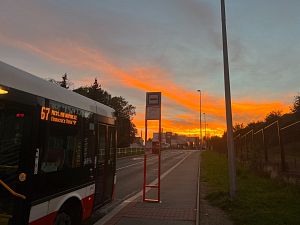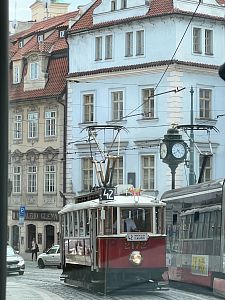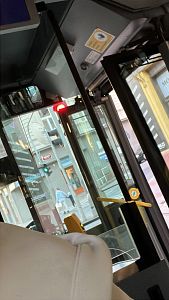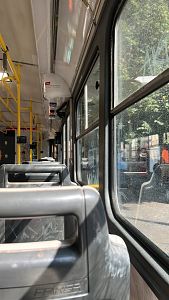Prague is notorious for being one of the safest & beautiful cities in the world. However, it is also known for a sophisticated & simple transportation system. As students-to-be or freshmen in Prague, I wanted to dedicate a blog to break down three essential aspects of being aware of: What transportation is available, how it works, & what you need. Stay tuned for recommendations of great applications at the end!
There are three primary forms of transportation other than train & car (including taxi & Uber/Bolt services). In Prague, you will inevitably go around by bus, tram, & metro (subway).
The fastest goes first! Prague has three metro lines, A, B, & C, with a 4th one, D, planned to open in 2029. Metros run from 4:30 AM till midnight with 3:30 minute intervals during the week & up to 8-10 minute intervals on the weekend. Line A (Green) runs east to west from Depo Hostivař to Nemocnice Motol & has 17 stations. Line B (Yellow) runs east to west from Černý most to Zličín & has 24 stations. Line C (Red) runs north to south from Letňany to Háje & has 20 stations. Transfer stations, where two lines intersect, include Můstek (lines A & B), Muzeum (lines A & C), & Florenc (lines B & C).
Buses (“autobusy”) bridge the outer centre areas with the outskirts, running from 4 AM till midnight with waiting times between 7-12 mins. There are also night buses which run rarely. The most important ones to know are 119 & 100, which take you to & from the Václav Havel airport to Nadrazi Veleslavin (metro line A) & Zlicin (metro line B). Another essential bus is 112, as it takes you to the Prague ZOO from Nádraží Holešovice (metro line C). Finally, buses have some stops, which are “na znameni” (meaning on the sign), symbolized by a bell on the stops screen; you must press the red stop or door open button; otherwise, the driver will skip the stop. The announcement says, “příští zastávka je na znamení” (meaning the next stop is on the sign)— don’t worry, you’ll get the hang of it!
Last but not least, the symbols of Prague, one could say, our trams! Czech people often say “tramvaj má přednost,” meaning “the tram has priority.” While crossing roads, it is understood that although people have priority over cars, trams have priority over us! Trams (“tramvaje”) are unique to other forms of transport & will be your best friend. Daytime trams run from 4:30 AM till midnight with 8-10 minute intervals, while nighttime trams run from 12:30 AM till 4:30 with 40-minute intervals. Faster than buses and slower than metros, they span the entire city seamlessly without much hassle!
I’d also like to give a quick note for some announcements. First, when the station is about to stop, it will say the stop’s name, such as “Můstek.” Because it is a transfer, the announcement will follow up with “přestup na linku A/B,” which means “transfer on line A/B;” if you were on line A, it would say transfer to line B, & vice versa. Then, before the doors start closing, a warning saying “ukončete prosím výstup a nástup, dveře se zavírají,” will go off, which states, “please finish exiting & boarding, the doors are closing.” Buses & trams will have a warning sound & metros will have a red light right above the door. When you are approaching the next stop, you will hear “příští stanice/zastavka: (Insert the name of a stop), “which means “the next station/stop.” I hope it is easy to follow. Again, do not be too pressed on these technicalities. You will learn as you go!
Before hopping on any form of transportation, you will need a ticket! In underground metro stations, yellow vending machines & ticket offices can be found, where short or long-term tickets can be bought. Short-term tickets depend on age & span from 30 mins to 72 hours. Those tickets have to be validated once in yellow validators. However, as a student, you will eventually purchase a long-term ticket from 30 days to a year. Attaching it to your ID & ISIC will allow you to receive your “Lítačka”, the official transport card (so when those policemen in the metros come up to you, you are prepared!).
Now, the part you have been reading for! To plan your trips on time, anticipate delays, & get where you need to from where you are, I’d recommend two free applications: “IDOS” & “PubTran.” While Google Maps works well, those apps have everything in a condensed manner. You plug in your location (or it calculates the nearest stop for you if you’re unfamiliar with the area), then you put where you want to go, & you have a rundown of the timings, stops in the middle, & different transport options. Make sure to check these out. Safe travels!





